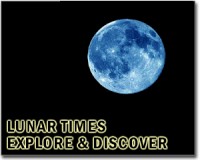 |
Houston TX (SPX) May 21, 2009 Unlike other Space Flight Simulation studies which mimic micro gravity by placing subjects in a bed with their heads inclined six degrees lower than their feet, The Lunar Analog study is a 9.5 degree head up study. Physics determines the 9.5 degrees incline - at this angle, the gravity force through the subject's legs along the long axis is 1/6th of the subject's body weight. The study goals are similar to our other studies conducted by NASA, to assess the effects of simulated reduced gravity on the body. Once scientists have confidence that these bed rest models induce changes similar to spaceflight, they can assess ways to mitigate these effects to possibly keep the astronauts healthier in space and on the moon. The Lunar Study is a pilot study to confirm that scientists are seeing what they expect in terms of the physiological changes. The study requires the subjects to be on the unit for two weeks for baseline tests and diet stabilization, then in the 9.5 degree bed (for 16 hours a day) for 6 days. The subjects sleep at zero degrees. This change from 9.5 degrees to zero degree each night is to simulate a lunar gravity field and astronaut activity. The astronauts will be sleeping "flat" when they stay on the moon (they will not be on their feet 24 hours a day), so there was no a need to have study participants subjected to a 9.5 degree tilt 24 hours a day. The goal of the study is to examine the effects of lunar gravity on the "long axis" of the body, so "removing" the simulated lunar gravity from the feet and legs each night by going to zero degrees should simulate the lunar activity. Once eight subjects complete the study and scientists confirm the data, NASA will proceed with a new Lunar Study in the fall of 2009 that will involve 14 days of pre-bedrest preparation, and 60 days in bed. One important note is that the 9.5 degree angle provides the appropriate mechanical stimulus to investigate losses in bone and muscle function. This mechanical stimulus however, does not produce the upward shifting of body fluids in the cardiovascular system that scientists expect to see on the moon. To obtain these changes in the cardiovascular system, knee-high compression hose are used to facilitate upward movement of body fluids. Spaceflight (no gravity) is a little easier to model on the ground, the minus-six degrees is chosen to simulate the cardiovascular effects. Since there is negligible gravity in space, scientists simply remove all forces and weight from the long axis with confined bed rest. For more information on the Lunar Study or other Space Flight Simulation studies please call the Human Test Subject Facility at the Johnson Space Center at 1-866-JSC-TEST (572-8378) or visit our website. Share This Article With Planet Earth
Related Links Lunar Bed Rest Study Mars News and Information at MarsDaily.com Lunar Dreams and more
 NASA book presents Apollo mission photos
NASA book presents Apollo mission photosWashington (UPI) May 19, 2009 The U.S. space agency has produced a new book chronicling Apollo mission 7 through 17 using photographs selected by the astronauts. The book - "Apollo: Through the Eyes of the Astronauts" - was produced by NASA and Abrams Books. It will be published in June, in advance of the 40th anniversary of Apollo 11's historic lunar landing, which occurred July 20, 1969. "Most Americans ... read more |
|
| The content herein, unless otherwise known to be public domain, are Copyright 1995-2009 - SpaceDaily. AFP and UPI Wire Stories are copyright Agence France-Presse and United Press International. ESA Portal Reports are copyright European Space Agency. All NASA sourced material is public domain. Additional copyrights may apply in whole or part to other bona fide parties. Advertising does not imply endorsement,agreement or approval of any opinions, statements or information provided by SpaceDaily on any Web page published or hosted by SpaceDaily. Privacy Statement |